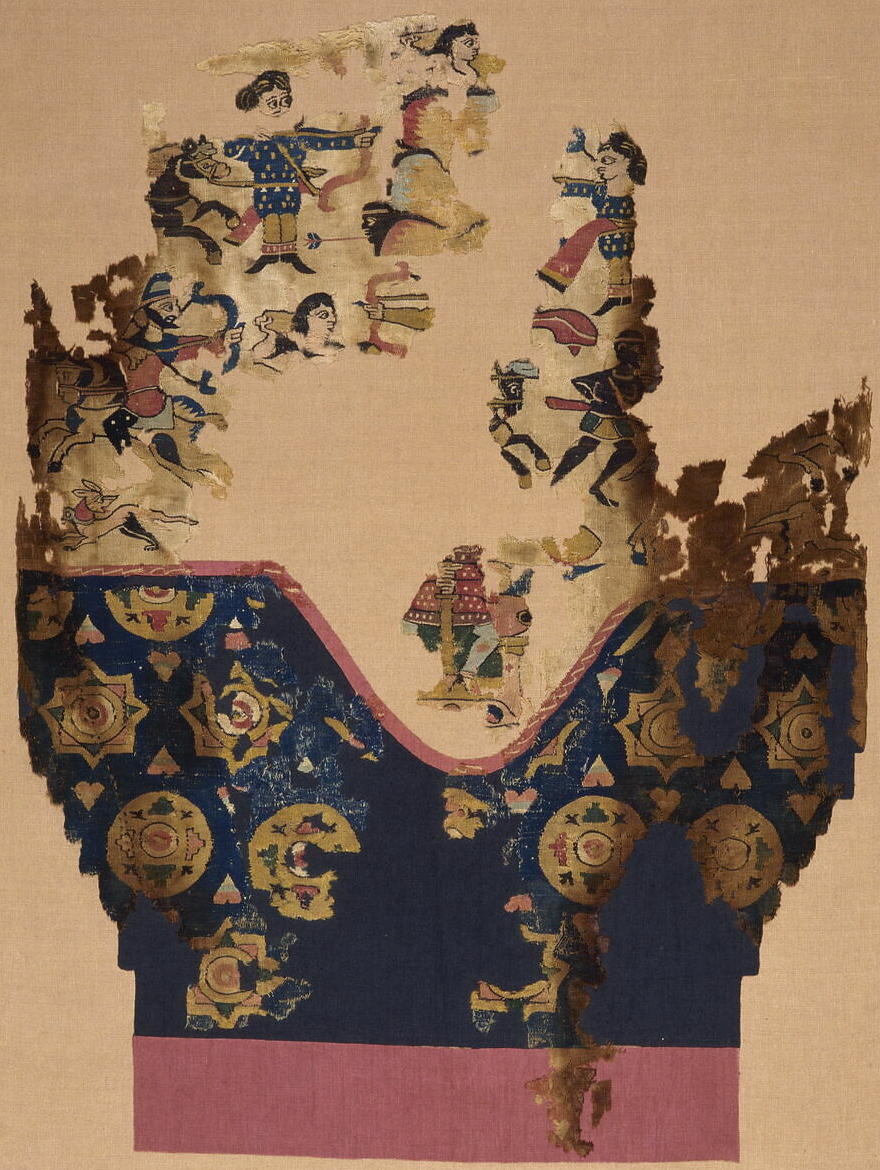Jambière au roi sassanide
Antinoé
tapisserie, laine
L. 73 cm; W. 55 cm
Louvre inv. E 29323
Legging
This elaborately decorated legging was discovered in a tomb in Middle Egypt.
Far from Egyptian in style, featuring as it does iconographic themes of foreign origin, it is nevertheless almost certainly of Egyptian manufacture.
It depicts a battle scene, unfortunately highly fragmented, with archers and a Persian king.
Part of a foreign uniform
The legging is displayed flat, for conservation purposes and also in order to display as many of its details as possible.
Once sewn, it formed a tubular shape that surrounded the leg and was secured at the waist by a strap.
Its counterpart is in the Musée des Tissus in Lyon (908. I. 117).
These pieces are unique, as they form the only pair of historiated leggings to have survived to the present.
They were discovered in a tomb in the Greco-Roman town of Antinoe in Middle Egypt, a site of great importance in the rediscovery of Coptic fabrics,
excavated by the French archeologist Albert Gayet from the late nineteenth century.
Made in Egypt
Although almost certainly made in the seventh century, these garments are very different from the objects generally found from this period.
Indeed they bear no resemblance to traditional Coptic dress, so rendering this discovery even more exceptional.
Made entirely of dyed wool tapestry woven in a single piece, these leggings were nevertheless almost certainly created in Egypt, as witnessed by the technique used:
a skill perfected by the Copts.
Battle scene
This legging is less well preserved than its counterpart in Lyon,
but because both pieces share the same design, it is possible to re-create the missing parts of the Louvre legging.
The design consists of three relatively symmetrical areas.
The lowest section features a network of hearts set within lozenges formed by circles and rectangles.
Above this is a line of alternating circles and stars, together with more hearts.
A wavy line separates this section from the third part of the design.
The curve of this line allows space for a seated man, placed directly in the center;
he holds with both hands a heavy sword driven into the ground, and he sits on a large cushion placed on a throne.
Above, in contrast with this motionless figure, there rages a fierce battle between three different types of figure.
The scene is one of ferocious cruelty, the Lyon legging revealing that the dark-skinned figure on the right side is being dragged along by a victorious horseman.
This episode might be a reference to the war that pitted the army of the Sassanide king Khosroes against the Arabs and the Abyssinians in 570 in Yemen.
This would date this pair of leggings to approximately 600, or the very early years of the seventh century.
Louvre
